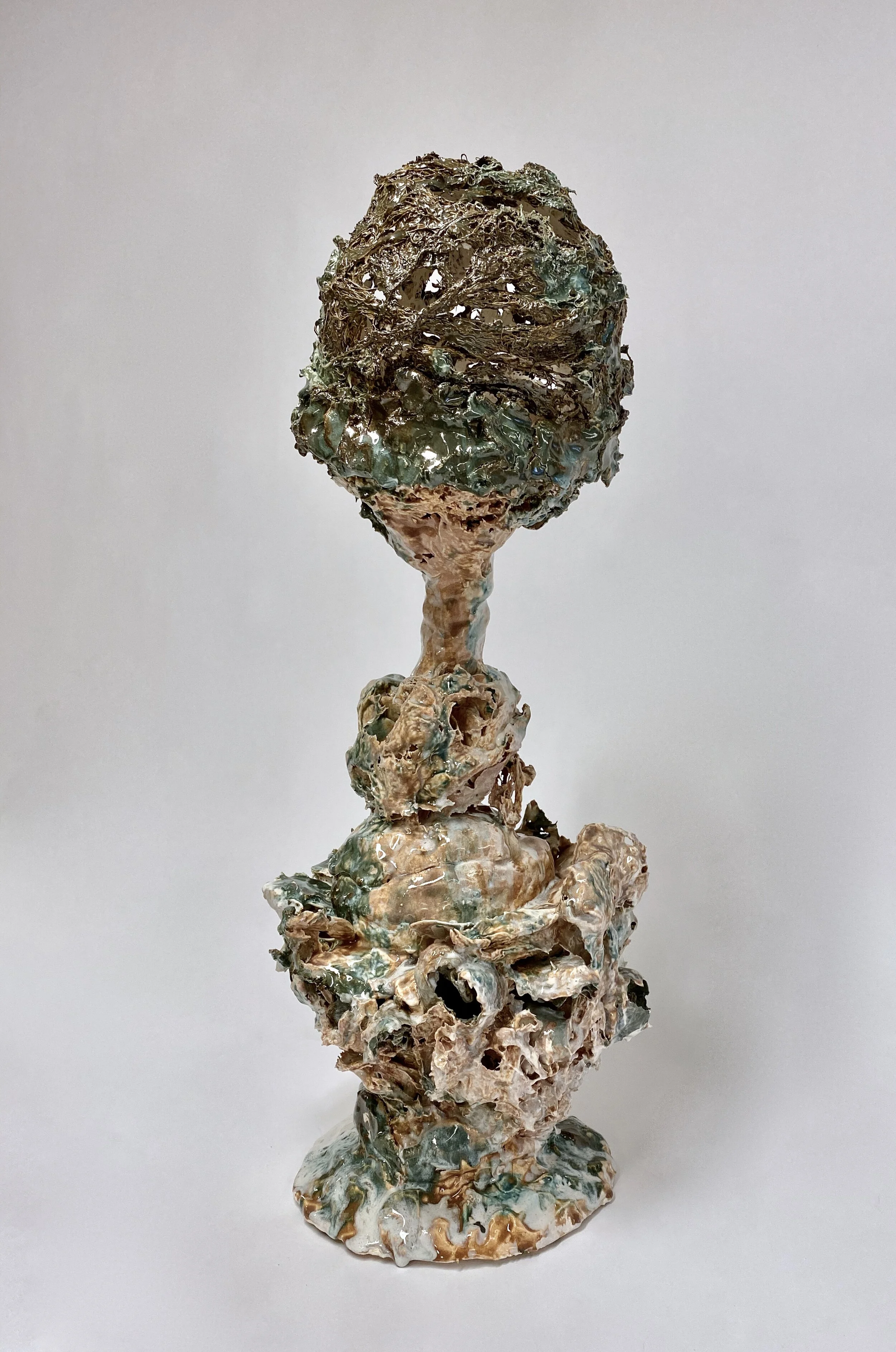PECULIAR FORMS REFERENCE GROWTH AND DECAY
TOBY DUNCAN AND ANITA HANCH-HANSEN
Bubbled and textured like a silty riverbed, Toby Duncan’s contribution to the Cluster Crafts online exhibition and shop is a highly distinctive collection of detailed ceramic vases. Their surfaces seem geological, volcanic almost. Duncan explains that he is inspired by nature and its contrasting effervescent aliveness and decay.
The series is named Orbit and comes from questions around the deep and unseen forces at play in the universe.
Vent 3
“My Orbit pieces are bubbles, eggs, moons and shells condensed into one,” says Duncan. “I am reminded while making them of the near impossibility of imagining the shape of the universe while inhabiting it, and our endless compulsion to visualise it from a fictitious external standpoint.”
Crucible
Vent 2
“Gravity, the origin of life on earth, electromagnetic waves, or the human search for meaning might be at the core of the ideas for a series,” says Duncan. “And always now a fascination with the material, chemical, geological properties of ceramics in its broadest sense.”
The shapes reference traditional Korean “moon jars”: wide-bellied spheres that can contain great volumes in the space within them. The basic forms are made using a potter’s wheel, and an appropriately rotating tool that spins as helps the artist form pieces inspired by orbiting celestial bodies.
Vent 6
Vent 2
Art, Duncan claims, changed his life when he was only five years old. His creative journey took has taken him on an expressive journey from clay through to paint, mixed-media sculpture and back to clay. He finds the material’s malleable qualities irresistible.
He hopes that his work invites the viewer to look closer, that there is always something new to be discovered.
“Nature is my mentor here, creating worlds within worlds; fractal-like, and exquisite in their variety and, simultaneously, in their simplicity.”
Norwegian ceramic artist Anita Hanch-Hansen’s sculptural pieces also take curious forms. She uses stoneware and porcelain, using the history of the materials to influence her shapes and colours. Like Toby Duncan, Hanch-Hansen’s work looks at the juxtaposition between life and death in the natural world.
“In my practice I explore cyclical processes of chance associated with growth, transformation and decay,” she says.
Part of her artistic process is the exploration of clay at different stages of its material journey: unfired, bisque fired, high-fired, glazed and unglazed. At all these different stages she looks at the qualities that the clay manifests, such as fragility, colour and density. She integrates different natural materials into her work.
“The work comes to me through repeated rounds of modelling, dipping, pouring, firing, and glazing,” explains Hanch-Hansen. “Natural materials – such as rock, sand, shells, mushrooms, plants, twigs and bark – are mixed with the clay in this process.”
Recovered
Fungus
The organic materials can leave traces of colour or leave structural traces after firing. The elaborate process is part of the character of the work.
“I am inspired by nature and its vulnerability and strength,” she says. “Clay undergoes various stages each with its own characteristics.”
Hanch-Hansen hopes that her work provides the viewer with an understanding of the passing of time and the changes that happen all around us.
See for yourself; work by both Toby Duncan and Anita Hanch-Hansen can be viewed and purchased on our Cluster Crafts online store.
Thank you for reading,
Katie De Klee & Cluster Team.



